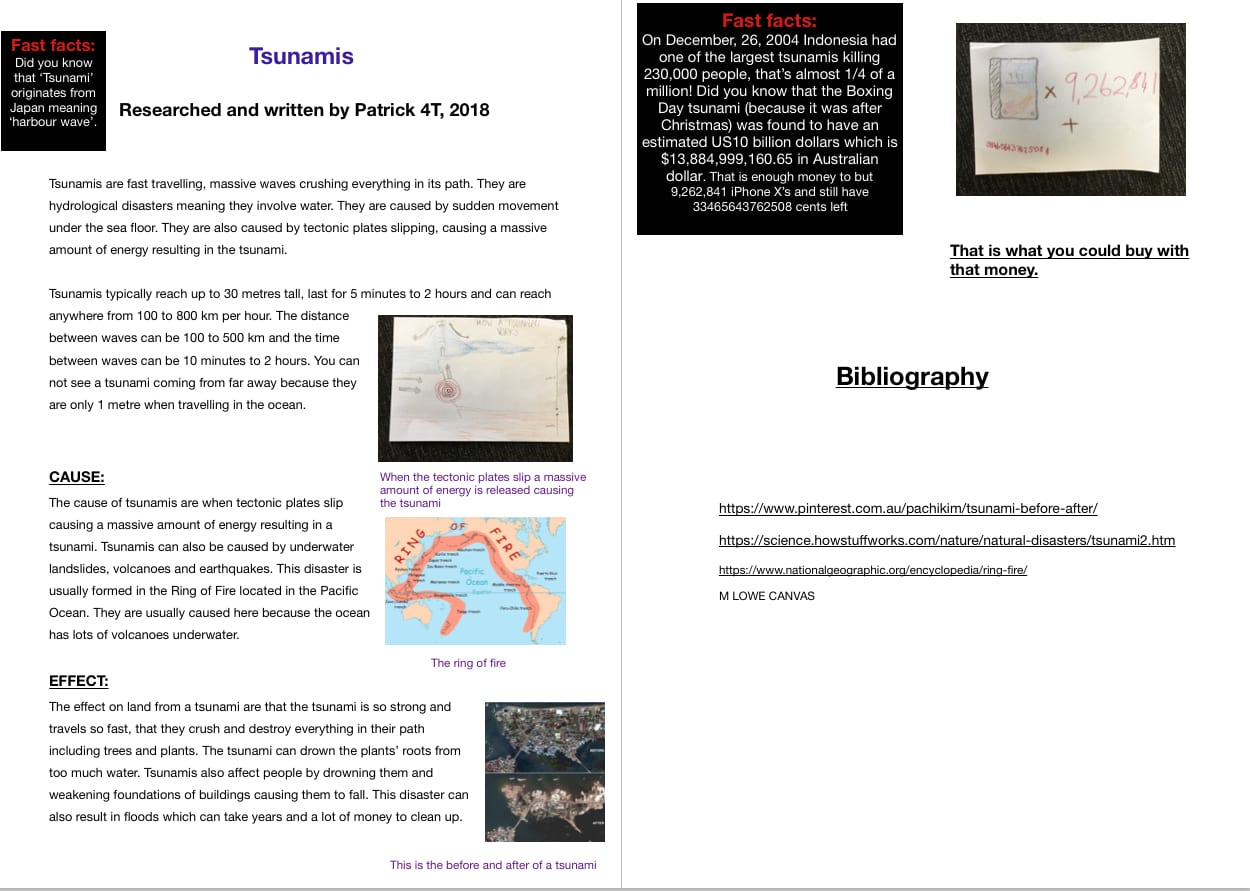In term 4 we have been focusing on natural disasters. I focused on tsunamis and wrote a whole information report by myself. Here is the report:

Do you remember how many kmph the tsunami can travel and what I described the speed of the wave?
In term 4 we have been focusing on natural disasters. I focused on tsunamis and wrote a whole information report by myself. Here is the report:

Do you remember how many kmph the tsunami can travel and what I described the speed of the wave?
The Clean green grass vanishes before your eyes. Can we help? Dun dun da da daaaaa.
Yes of course we can be stop stepping on this beautiful grass. This term year 4 are learning about weathering, erosion and landforms. We went on a work around the school to see if we could find examples of weathering and erosion.
Here is a video that Matilda and I made about weathering and erosion:
If the video doesn’t work for you tap below:
ECF94A1C-BDD3-4143-AD29-CCCBFC2792C2-1fwlku0
Do you remember what the difference between weathering and erosion is? Can you tell me any examples of weathering or erosion near where you live?
As we walked up the dark crowded hall way we came to a dead end. “Back we go,” Ms Tirtilas sighed. Tuesday the seventh of August, 4T were visiting the senior school science lab to learn about the properties of metals
Back down the corridor we went and into a large, bright and warm room. “Welcome everyone, you can come in, get your lab coat on then take a seat,” Mick explained as we all came into the room. “Time to start the reactions.

Have you ever done a experiment? If so tell me about it in a comment.
This term we are learning about science and the topic is ‘Material Matters’
Last week we participated in a school visit from hands on science we did lots of experiments including an absorbency test, a flammability test, a strength test and making a latex disc.
My favourite experiment was the abaorbancy experiment which was testing which materials absorbed water the fastest. Dri-fit which is a Nike made material was the quickest to absorb the water.
Here is the science report for what we did:
Aim:
To see which material absorbs the water the fastest.
Hypothesis:
I hypothesise that the dri-fit material will absorb the water the fastest because dri-fit absorbs sweat quickly.
Variables:
Measure: how long it takes for materials to absorb the water.
Change: the materials
Same: the speed of your counting, the amount of water and the size of the material.
Materials:
•water
•materials (dri-fit, cotton, nylon wool, plastic, nomex)
•a timer
Method:
WHAT HAPPENS WHEN THE MATERIAL DOESN’T ABSORB THE WATER
If the material doesn’t absorb the water stop the timer after 1 minute to 3 minutes and record the time on the timer with a ‘+’ after it.
(For example: 3min+)

What experiment in this post would you like to do your self?